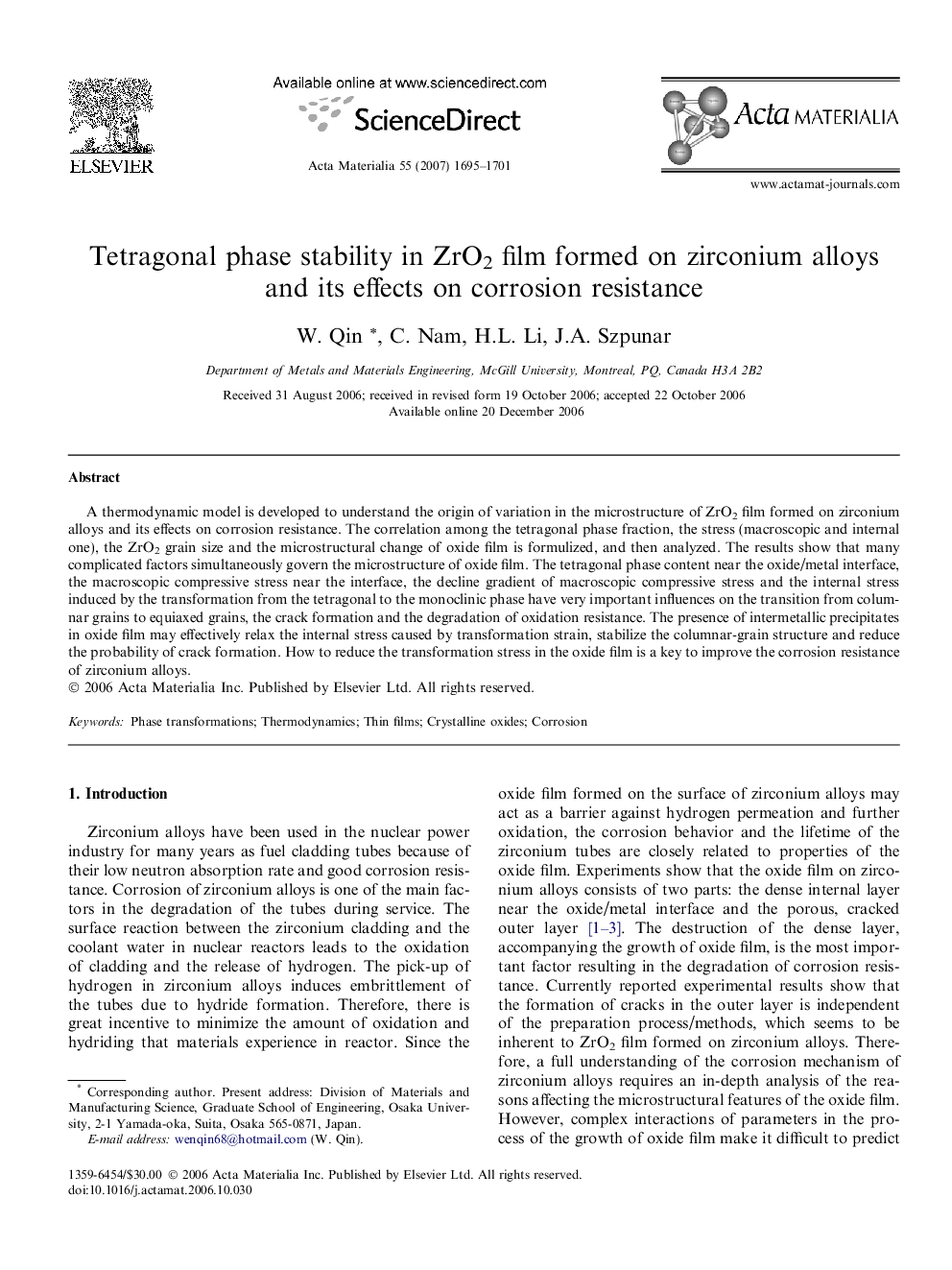| Article ID | Journal | Published Year | Pages | File Type |
|---|---|---|---|---|
| 1450877 | Acta Materialia | 2007 | 7 Pages |
A thermodynamic model is developed to understand the origin of variation in the microstructure of ZrO2 film formed on zirconium alloys and its effects on corrosion resistance. The correlation among the tetragonal phase fraction, the stress (macroscopic and internal one), the ZrO2 grain size and the microstructural change of oxide film is formulized, and then analyzed. The results show that many complicated factors simultaneously govern the microstructure of oxide film. The tetragonal phase content near the oxide/metal interface, the macroscopic compressive stress near the interface, the decline gradient of macroscopic compressive stress and the internal stress induced by the transformation from the tetragonal to the monoclinic phase have very important influences on the transition from columnar grains to equiaxed grains, the crack formation and the degradation of oxidation resistance. The presence of intermetallic precipitates in oxide film may effectively relax the internal stress caused by transformation strain, stabilize the columnar-grain structure and reduce the probability of crack formation. How to reduce the transformation stress in the oxide film is a key to improve the corrosion resistance of zirconium alloys.
